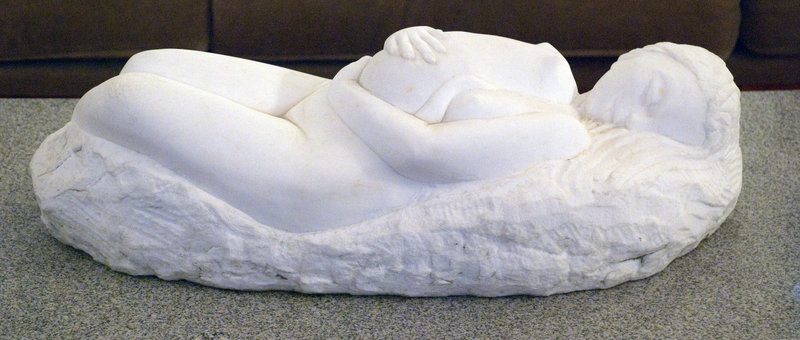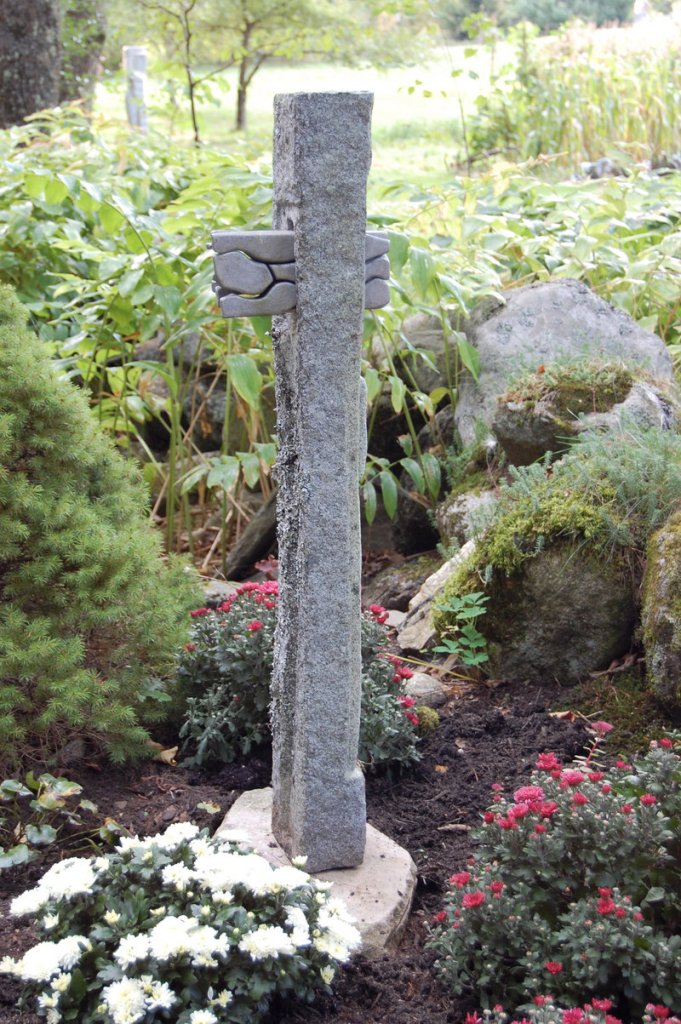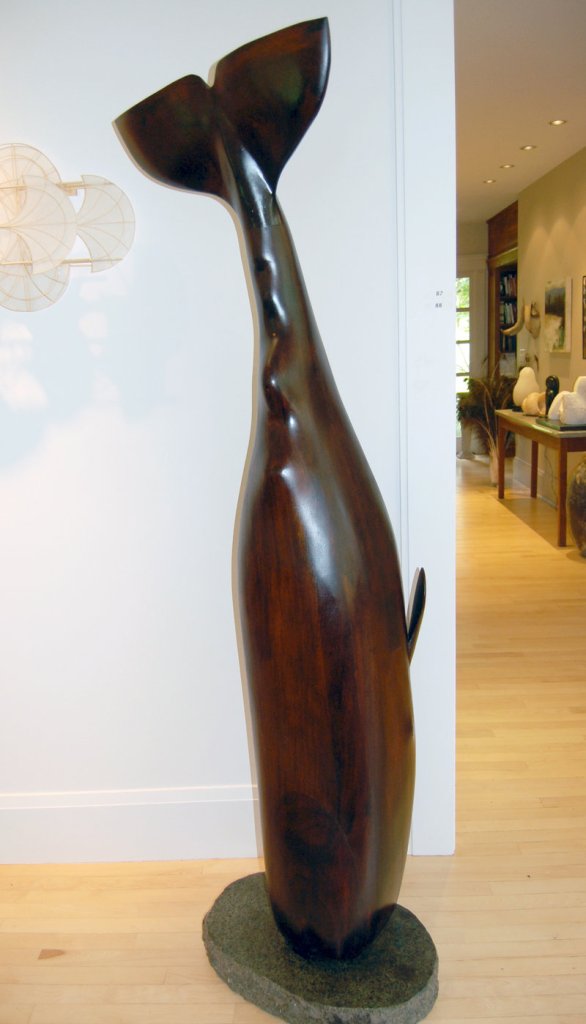Of the visual arts, I think sculpture is the toughest to create. It’s tough enough to compose a good painting, but composing in the round while using both positive and negative space is just plain hard to do. I think this is why even the very best sculptors often flounder or fail.
The person probably best known in Maine for presenting sculpture is June LaCombe. Her 2007 outdoor exhibition at Maine Audubon was terrific, so I was excited to visit Hawk Ridge Farm, LaCombe’s home and gallery.
The featured artist in the autumn show at Hawk Ridge is 85-year-old master sculptor Cabot Lyford. While I have seen and enjoyed many of Lyford’s works, I happen to dislike his dolphin sculpture on Milk Street in the Old Port (yet it is my wife’s favorite work in Portland). So I went to Hawk Ridge with no expectations.
However, the 20-minute trek to Pownal was absolutely worth it. Many of the 110 works now on display are very strong. My favorite work is Gary Haven Smith’s huge granite “Coming Around” — an abstract pair of wings swooping around an empty-circled center.
But Lyford’s 45 pieces make for an impressive overview of his work during the past few decades. It ranges from abstract to figurative, but always with a comfortably organic density. His lines are smooth and natural. His forms tend toward the robust. He has a fine sense of weight and volume.
My favorite piece by Lyford is a work shown courtesy of the Harbor Square Gallery. (I like that LaCombe worked with them and Gleason Fine Art on this show). It is a fairly large marble of a nude woman lying on her back with a cat perched on her chest. The head of the pleasantly Rubensesque woman is turned so that we see it in profile. The cat’s pointed face touches the single straight line on the woman — the muscle that travels from her clavicle to her ear. The highly polished marble already glows, but the spark in that synapse between woman and cat makes the whole piece electric.
In general, though, I am not comfortable with Lyford’s human figures. He seems to prioritize the gesture of the sculpture over the feel of the body, so something feels a bit off.
While I am not usually a fan of animal art, Lyford’s wooden whales are simply terrific. He presents sperm whales with a charming blend of biological accuracy, respect for the natural flow of the mahogany and early American representations of whales (like you might see on a weather vane in Nantucket).
While many sculptures default to the bilateral symmetry of bodies to solve (or avoid) the issue of composing a 3D body gesture, Lyford has a great feel for the subtle bends of animals’ bodies. Because of this, “Ahab’s End” and “Sounding Whale” are very compelling sculptures.
As well, Lyford’s powers of observation help convey his apparent love of his subject. I don’t normally think of dorsal ridges (bumps on a whale’s back) as defining the shape of a whale, but Lyford does just that, and it’s delicious.
Lyford’s black granite “Storm” is the only other whale in the show, but it’s also one of the best. The sleek but massive forms of the whale emerge from the unpolished and rough stone sea. Lyford’s equating the stone with the sea is smart, successful and handsome.
His puzzle works from the 1970s show that Lyford has been doing smart work for a long time and has thrived on challenging himself, but I don’t think they are fully successful as sculptures in the round.
In contrast to the puzzle works’ technical complexity, Lyford’s newest works — carved wooden animals and figures — exude a confidently serene energy. He uses deep marks of the carving tool to tie together issues of texture, line and rhythm. His “Cato” is a large cat curled in rest that really feels like a cat — not because of verisimilitude but through gesture, weight and the feel of the abstracted form.
I enjoyed seeing Lyford’s range of work both inside LaCombe’s gallery/house and outside on the grounds — particularly because many of the older works have lived outdoors for decades and have achieved their ultimate form, complete with lichen and that coarsely weather-ground finish of exposed stone.
I was surprised by the gorgeous textures of Lyford’s slate sculptures. One of his most intriguing pieces, “Maelstrom,” features a swirling vortex that seems to be swallowing the slate from the inside.
Hawk Ridge Farm itself is gorgeous. The sculpture grounds are enticing and filled with (mostly) interesting work. There are plenty of works in the show that I don’t like, but I expect that with sculpture. Besides, this is a huge show, so there’s no need to spend time with the works that don’t interest you.
I can see how going to someone’s fancy house to see art would be very intimidating to many potential viewers, but if you enjoy beautiful homes filled with some very good art, you’re in for a treat.
Freelance writer Daniel Kany is an art historian who lives in Cumberland. He can be contacted at:
dankany@gmail.com
Send questions/comments to the editors.





Success. Please wait for the page to reload. If the page does not reload within 5 seconds, please refresh the page.
Enter your email and password to access comments.
Hi, to comment on stories you must . This profile is in addition to your subscription and website login.
Already have a commenting profile? .
Invalid username/password.
Please check your email to confirm and complete your registration.
Only subscribers are eligible to post comments. Please subscribe or login first for digital access. Here’s why.
Use the form below to reset your password. When you've submitted your account email, we will send an email with a reset code.